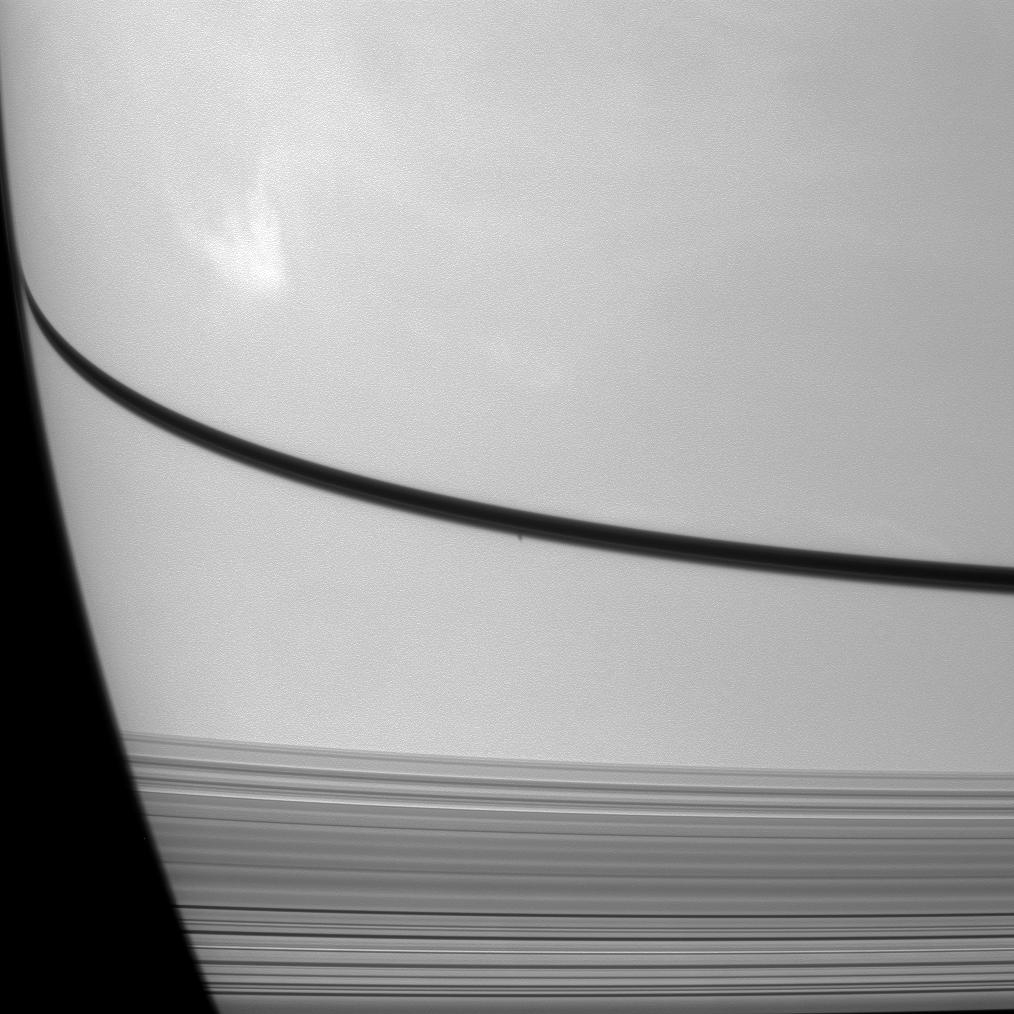Shadow Below Another

| PIA Number | PIA11606 |
|---|---|
| Language |
|
The shadow of the moon Prometheus can be seen as a small dark dot on Saturn just below the narrow shadow cast by the rings in the center of this image, which was taken almost a month after the planet's August 2009 equinox.
A large, bright cloud system is visible in the top left of the image. This view looks toward the northern, sunlit side of the rings from about 10 degrees above the ringplane.
The novel illumination geometry that accompanies equinox lowers the sun's angle to the ringplane, significantly darkens the rings, and causes out-of-plane structures to look anomalously bright and cast shadows across the rings. These scenes are possible only during the few months before and after Saturn's equinox, which occurs only once in about 15 Earth years. Before and after equinox, Cassini's cameras have spotted not only the predictable shadows of some of Saturn's moons (see Across Resplendent Rings), but also the shadows of newly revealed vertical structures in the rings themselves (see A Small Find Near Equinox).
The image was taken with the Cassini spacecraft narrow-angle camera on Sept. 4, 2009 using a spectral filter sensitive to visible light centered at 619 nanometers. The view was obtained at a distance of approximately 2.7 million kilometers (1.7 million miles) from Saturn and at a Sun-Saturn-spacecraft, or phase, angle of 92 degrees. Image scale is 16 kilometers (10 miles) per pixel.
The Cassini-Huygens mission is a cooperative project of NASA, the European Space Agency and the Italian Space Agency. The Jet Propulsion Laboratory, a division of the California Institute of Technology in Pasadena, manages the mission for NASA's Science Mission Directorate, Washington, D.C. The Cassini orbiter and its two onboard cameras were designed, developed and assembled at JPL. The imaging operations center is based at the Space Science Institute in Boulder, Colo.
For more information about the Cassini-Huygens mission visit http://saturn.jpl.nasa.gov . The Cassini imaging team homepage is at http://ciclops.org .
Credit: NASA/JPL/Space Science Institute
